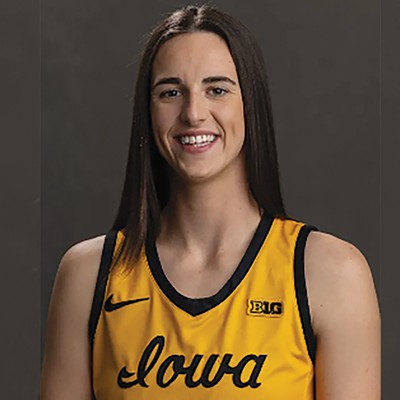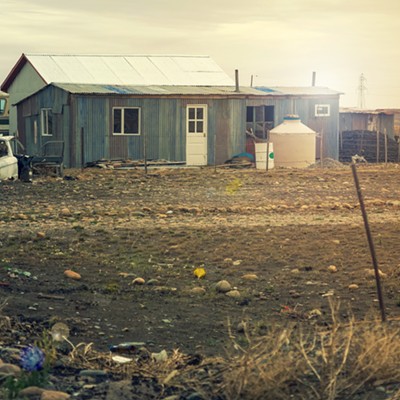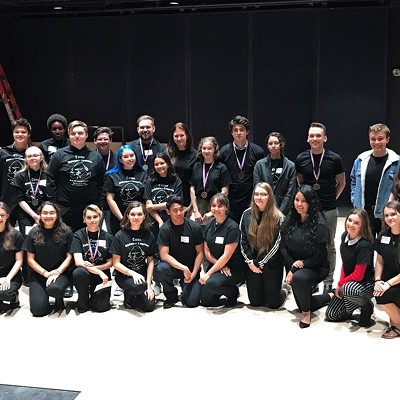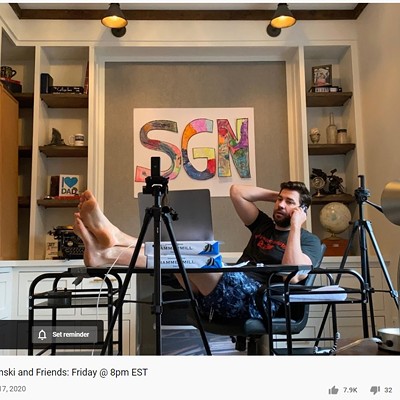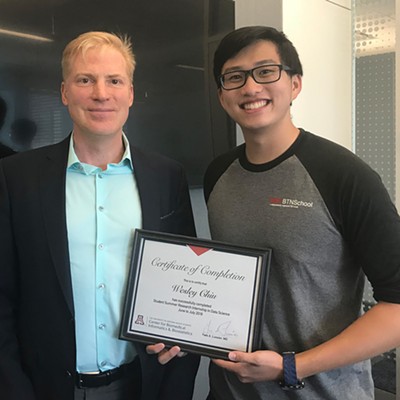The Arizona Interscholastic Association (AIA), the Phoenix-based organization that governs high school interscholastic athletics in the state, has existed in one form or another since 1925. The AIA's task of balancing the needs of schools big and small, metro and rural, public and private, is not an easy one, and can be likened to herding cats.
The AIA is a big target that's easy to blame when things go wrong, and one that rarely, if ever, gets credit when things go right (which is most of the time).
This is not about one of the times the AIA got things right. Indeed, this may the most wrong the AIA has ever been.
The organization is preparing to implement a draconian reorganization of its member schools, according to a plan that was drafted in secrecy, and only partially explained to some (not all) of the state's athletic directors, before it was passed by a unanimous vote by the executive committee (in an even harsher form than what was presented to the ADs).
The reorganization will, first and foremost, reduce the number of student-athletes who have the opportunity to participate in postseason play, the dream of all present athletes and the touchstone of all former athletes. (Ask the 40-year-old CEO about her high school athletic career, and, chances are, she will smile and say something to the effect of, "We went to state my senior year!")
This curtailing of participation and opportunity seems incongruous coming from an organization that has as its mission statement: Create and sustain an ethical culture through activities that encourages (sic) maximum student participation by providing AIA member schools with an even playing field to ensure fair and equitable competition in interscholastic activities.
In some sports, the AIA will slash the number of postseason events by as much as 94 percent, and every single sport will see a sharp decline in the number of individuals and teams that will be allowed to achieve that universal goal of going to state.
For the state's big schools, the vast majority of which are in the Tucson and Phoenix metropolitan areas, the cutbacks will likely lead to an exacerbation of the already prevalent problem of recruiting (which is illegal) and athletic-program-shopping by parents.
However, the bulk of the damage will fall on small schools—and, not surprisingly, nobody outside of the small schools seems to care.
Create and sustain an ethical culture ...
The AIA currently divides its schools into classes based largely on enrollment. For several decades, there were five classes (1A for small schools, through 5A for the biggest schools), but after rapid growth in the aforementioned metro areas, the AIA split the 5A and 4A classes into 5A-I, 5A-II, 4A-I and 4A-II, creating seven classes. When the split came, it was determined that all seven classes would have approximately the same number of schools.
Political maneuvering and competitive shenanigans arose almost immediately. While the classes were supposed to be as close in size as possible, as it currently stands, the 3A division has 28 teams; 2A has 42; and the overloaded 1A has 48. (In two recent cases, athletic directors pulled fast ones for their schools to enter and/or remain in the 1A, only to have their basketball teams—coached by the respective ADs—win state titles.)
Running state tournaments for seven different divisions was not easy (although not all sports had seven divisions; sports like badminton and boys' volleyball had only two or three). In recent years, the AIA had difficulty finding venues for state tournament games, and as the economy fell off the cliff, the AIA began to experience financial difficulties. As a result, a committee of administrators and superintendents made the modest proposal to cut down on out-of-town regular-season travel by big-school teams.
In late April, AIA executive director Harold Slemmer, as part of a whirlwind tour of the state, addressed a packed house of anxious athletic directors at Amphitheater High School. Slemmer talked about the concerns over travel costs and missed classroom time during the regular season, and then brought the hammer down by presenting the AIA's solution: the elimination of postseason participation opportunities for thousands of Arizona's student-athletes.
When asked what concerns over missed classroom time had to do with slashing the number of teams and individuals that get to go to state, he responded, "It's all together."
Less than two weeks later, the AIA adopted the plan without a vote of its member schools. There was also one major change from the handout that was given to the ADs at the informational meetings across the state: The number of basketball, baseball and softball teams allowed in postseason play had been cut even further, by a full third.
... through activities that encourages (sic) maximum student participation ...
Slemmer openly says that he thinks far too many kids get to go to state, and his reorganization plan would eliminate the seven classes and replace them with divisions, varying in number by sport.
Football would have six divisions for 219 teams, but the 123 schools with swim teams would be crammed into only two divisions. Girls' volleyball, played by 235 schools, gets five divisions, but boys' and girls' basketball (played by 246 schools) get only four divisions. (More on that later; the explanation is well worth the wait.)
It will be much harder to reach regional play (called sectionals under the reorganization plan). The number of postseason games, meets and matches toward which student-athletes work their entire athletic lives has been cut in every sport. Golf goes from 34 down to three; track and field from 44 to eight; swimming from 70 to four, and on and on.
Not exactly "maximum participation."
Throughout his talks and during subsequent interviews, Slemmer repeatedly used the word "special" when referring to postseason participation, although his use of the word comes off more as "restrictive" and "elitist," and maybe even "punitive."
... by providing AIA member schools with an even playing field ...
With Slemmer on vacation for much of July, it fell to AIA chief operating officer Charles "Chuck" Schmidt to explain the plan. (We got off to a bad start when I asked why the original plan presented by Slemmer at Amphi differed from what was passed a few days later. Schmidt said there was no difference. When I explained that I had the two different documents right in front of me, he responded, "The sectionals are independent of the state," which didn't answer the question at all.)
In basketball, the former 5A-I and 5A-II will basically become Division I, and the two former 4As will make up Division II. The former 3A schools will combine with some 2A schools to form Division III, and the rest of the 2A schools will join the 1A schools in Division IV.
Therein lies the situation that has some 1A coaches and athletic directors openly discussing seceding from the AIA. Schmidt scoffs at the idea.
"Say, for example," Schmidt says, "you have a small school with only 50 students. The largest school in that division can only have 299 students. That's only a difference of 250 students. That's not that many."
Coaches and athletic directors will tell you that the difference between a school with 3,000 students and one with 2,000 students is negligible—but the difference between the athletic fortunes of schools with 100 and 200 students is often staggering. And the difference between a school with 50 students and one with 300 students would be insurmountable, except in the rarest of cases.
Under the reorganization plan, the largest Division I basketball school would be 1.85 times as large as the smallest school (which would still have nearly 2,000 students). The largest Division IV school would have 18 times as many students as its smallest counterpart.
When asked about the inherent competitive imbalance, Schmidt repeated Slemmer's previous tone-deaf response to the same question. "Well, schools could just combine teams so they can be more competitive."
Slemmer's suggestion would mean the members of one coaching staff would all lose their jobs, and the kids at both schools would be told that they are not good enough to compete.
In other words, the system has a flaw in it big enough to drive a truck through.
... to ensure fair and equitable competition in interscholastic activities.
As if that weren't enough, the AIA is also telling schools which other schools they can play in the regular season. Schmidt says that computers will do the scheduling, with geographic distance taking precedence over competitive balance. Theoretically, the computer could have 3,000-student Tucson High School playing 120-student Arizona Schools for the Deaf and the Blind, because they're only a couple of miles apart.
Dan Ethridge is the principal, athletic director and girls' basketball coach at Immaculate Heart High School on the northwest side of Tucson. He says that the AIA hasn't officially informed him of all the changes, but he knows he's not in favor of them.
"They want us to play Pusch Ridge (Christian) because it's a couple miles away? They're a four-time 2A state champion, and we've got 60 kids in our school. We don't want to play them, and they don't want to play us. Neither of us would benefit in any way. We're fine going to Ajo, and Ajo is fine coming to us."
Ethridge, like others, has thought about his school leaving the AIA. "They don't care about us small schools."
An athletic director at a rural 1A school east of Tucson concurs. (The AD asked not to be identified, partly out of fear that "the AIA computer will probably give us a lousy schedule.") "There has been a lot of talk of the 1A leaving the AIA. It's human nature for them (the AIA) to care more about the big schools than the small schools. The AIA always talks about how 'the membership' called for change. It's nonsense. One or two schools complain in a way that the AIA likes, and the AIA uses it to implement its plan. Besides, (the AIA is located) in the middle of Phoenix. Why would they care about what goes on in Fredonia or St. David or Salome?
"What they don't seem to get is that high school sports play a big part in small-town life. If our teams can't compete, kids will stop playing, and a part of who we are will go away."
As for the notion of teaming up with other schools, the AD thinks it's "insane. Tell Douglas they have to (team up) with Bisbee. Or Benson and St. David. Or Willcox and (Elfrida) Valley Union. Those are fightin' words."
Finally, the AD adds: "They try to use the missed classroom time as an excuse for this entire overhaul; 1A kids and schools have been successfully dealing with that for decades. We know how to handle it."
Gerald Lunt is a dairy farmer whose family has lived in Eastern Arizona for generations. He's also a highly successful girls' basketball coach at Duncan High School.
"I don't think the AIA cares," he says. "People might complain, but the AIA will just say, 'Oh, it's a bunch of 1A schools. It doesn't matter.' They complain about losing money in the playoffs. Last year, they had the 1A state playoffs in Prescott. We played on a Friday around noon and had maybe 10 fans there. If they let 1A schools play home games in state, they could make thousands of dollars, and only half the teams would have to travel. That just makes sense."
Schmidt is understandably defensive about the plan. A large number of athletic directors from different classes petitioned the AIA to expand basketball to five divisions, but the AIA refused. Schmidt explained that the only reason girls' volleyball has five divisions is because the AIA is afraid of a lawsuit, seeing as all-male football has six divisions. They think that five for volleyball will keep the feds at bay. When asked what would keep a basketball coach from suing because volleyball gets a better deal, Schmidt's reply was, "Federal law, Title IX."
Schmidt says that there is widespread support for the plan. I told him that I had spoken with 17 coaches and athletic directors from 1A schools, and not one supports the plan in any way. He then started a sentence with, "We polled our members ... "
Two 1A athletic directors who are very active in the AIA both emphatically told me that the AIA never asked for their input, and that no polling or voting ever took place. One grumbled, "It's what's easiest for them. It definitely is not in the best interest of the kids."
When pressed to name people who are in favor of it, Schmidt rattled off a few names from the ranks of the 5A. When asked to name even one person from 1A, he finally came up with the name of Mike Sterkowitz from Joseph City. When I called Joseph City, I was told that Mr. Sterkowitz was unavailable until right before the start of school in August. I'll let you know what he says.
Nonetheless, the AIA is charging ahead with the plan. It was supposed to go into effect at the start of the 2011-2012 school year, but now there is talk about expediting the process and starting it in the middle of this coming year.
It might very well ring the death knell for some 1A athletic programs, dooming an entire generation of small-town kids to high school athletic careers devoid of hope, and therefore, dreams.


